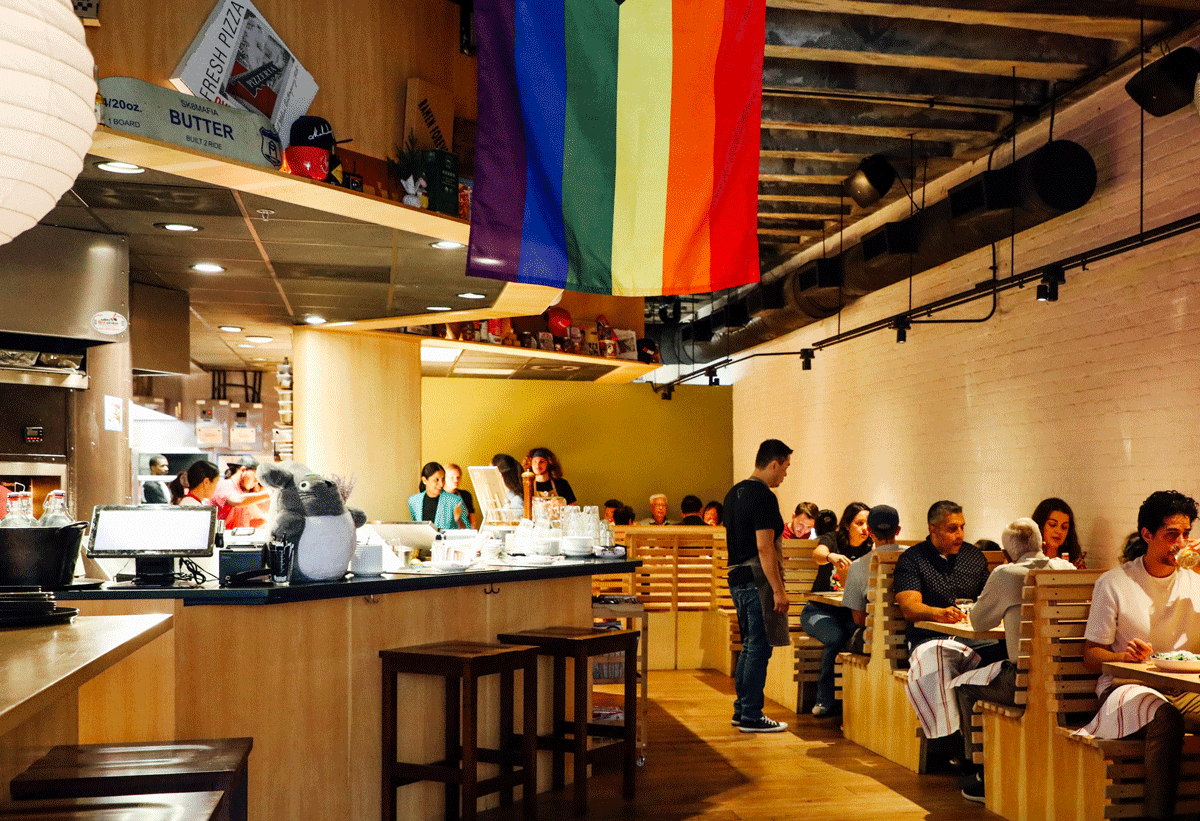
In Japanese, ‘Wafu‘ means something that is not originally Japanese but is done in Japanese style. Chef Katsuya Fukushima spent three weeks in Japan eating at various Wafu Italian restaurants throughout the country to gain a better understanding of this cuisine that blends two countries known for its food.

Chef Katsuya Fukushima
“It comes from reading a lot, eating out a lot, traveling to Italy. I’m half Japanese, and that plays a big part too. I take a lot of ingredients from both cultures and try to make sense of it all. I keep the menu traditional, nothing whacky“
THE FUSION’S ROOTS
The combination of Japanese and Italian cuisine has been around for a while in Japan, but it’s not well known in Washington, D.C. and Tonari is hoping to raise awareness of this cuisine to the city. American soldiers introduced spaghetti during the American occupation of Japan post-WWII. Fukushima describes it as something that happened naturally in Japan. While on his research and development trip in Japan, Fukushima observed that chefs in the country have gotten into the authenticity of Italian cuisine, describing how the cuisine has evolved from Wafu to more like eating traditional Italian food in Japan.
TONARI DINING
‘Tonari’ means next door or neighbor in Japanese, and that’s what diners will experience. In the morning, the space operates as a coffee bar savoring the Italian coffee culture. In the evening, the space is open for dinner. Chef Fukushima explained the menu inspiration for Tonari, “it comes from reading a lot, eating out a lot, traveling to Italy. I’m half Japanese, and that plays a big part too. I take a lot of ingredients from both cultures and try to make sense of it all. I keep the menu traditional, nothing whacky.”
The menu items highlight Fukushima’s creative talent in the kitchen: Italian onigiris, where the hand-held rice snack is filled with flavors like garlic bread and lamb ragu. For brunch, there is a selection of sandwiches on croissant-dough baguettes: smoked salmon and a cream cheese-labneh spread; beef mortadella with pistachios, plus butter, Dijon mustard and cornichon; and Japanese egg salad. For a twist, Tonari pizza dough is turned into sandwich bread items, including Italian conserved tuna with a combination of Dukes and Kewpie mayo, ponzu and greens, and another titled “Avocado Not Toast” with crushed avocado and confit tomatoes.


AUTHENTICITY IS A KEY INGREDIENT
Authenticity is important for the chef. His business partner, Daisuke Utagawa, said, “From my point of view, he’s very conscious of umami savoriness by bringing in the Japanese umami factor in Italian cuisine.”
The pasta and flour (Yokoyama Seifun) are imported from Japan. Tonari works with these food distributors: Silvert, Chefs Warehouse, Baldor and Huntsman. Here are some of the authentic Italian ingredients used on menu items at Tonari: anchovy, white anchovies, olives, tomato paste, Calabrian chiles, olive oil, balsamic, cheeses, and oregano. In November 2023, Tonari expanded by debuting coffee, brunch and Italian Onigiri (Japanese rice balls) to connect two coffee cultures in downtown D.C. During the day, Tonari’s bar is turned into a coffee bar serving caffeinated drinks such as espresso and dalgona coffee (instant coffee whipped until frothy and creamy, originating in Macau). Just like in Italy, customers can find fresh juices like pear and apricot.
